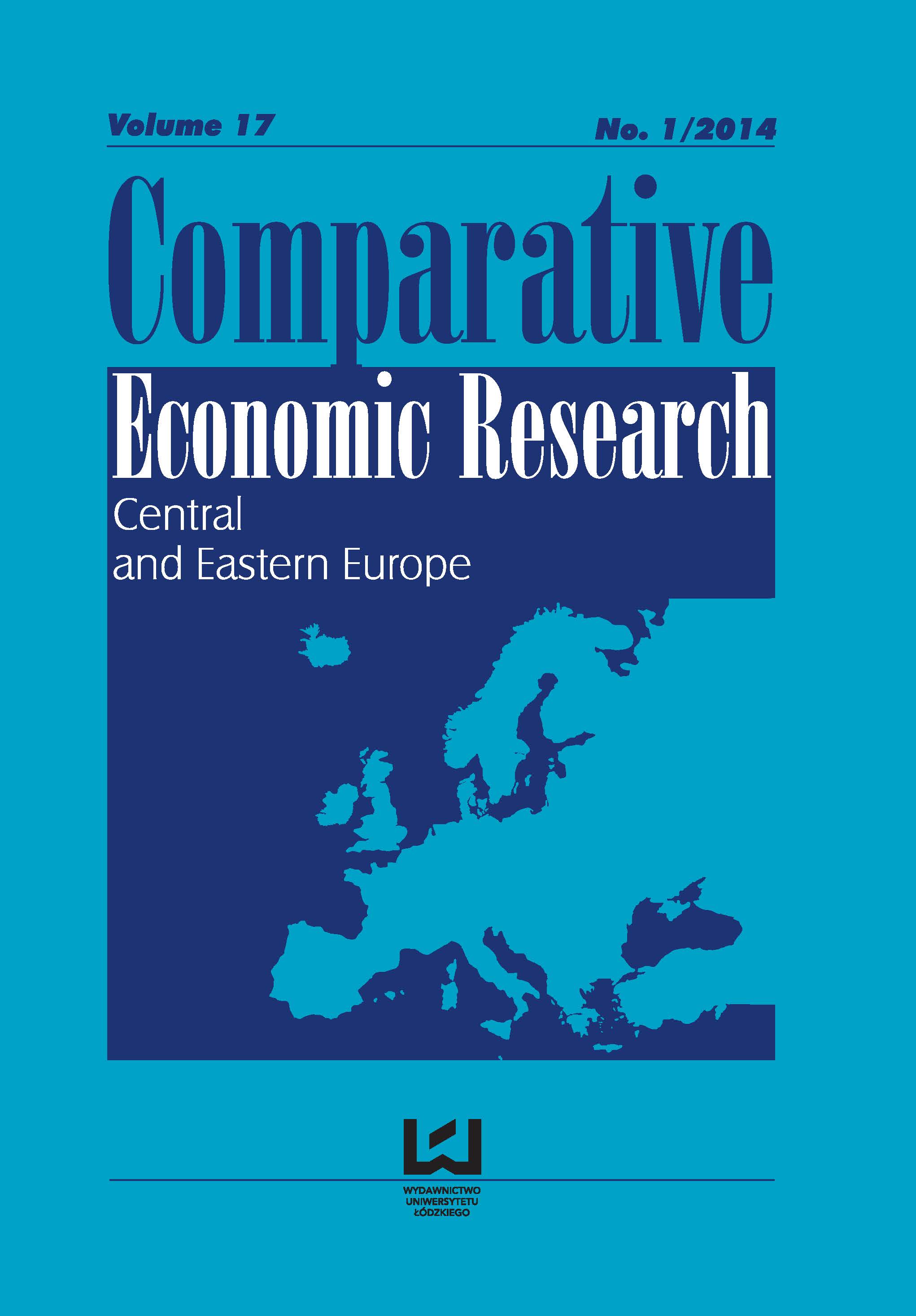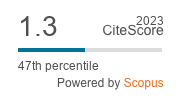Domestic Final Demand as a Determinant of R&D Activity in Selected Central and Eastern European Countries
DOI:
https://doi.org/10.2478/cer-2014-0007Keywords:
R&D in CCE countries, R&D multipliers, input-output modelAbstract
This article presents the results of an empirical study conducted based on selected countries in Central and Eastern Europe. The study focused on the impact of domestic final demand for products manufactured by individual industries on the R&D activity in the country. The main research tools are the Leontief model and R&D multipliers. The application of the input-output methods allows domestic R&D expenditures to be broken down into institutional sectors to establish what part of the expenditures is embodied in products manufactured to meet final household demand, in exports, etc.
Downloads
References
Belergi-Roboli A., Michaelides P.G. (2005), Measurement of R&D Multipliers: The Case of Greece, ‘Journal of Technology Transfer’, vol. 30, pp. 327-332
Google Scholar
Cameron G. Proudman J., Redding S. (2005), Technological Convergence, R&D, Trade and Productivity Growth, ‘European Economic Review’, vol. 49(3), pp. 775-807
Google Scholar
Dietzenbacher E., Los B. (2000), Analyzing R&D Multipliers, 13th International Conference on Input-Output Techniques, Macerata
Google Scholar
Dietzenbacher E., Los B. (2002), Externalities of R&D Expenditures, ‘Economic Systems Research’, vol. 14, pp. 407-425
Google Scholar
Frantzen D. (2003), The Causality between R&D and Productivity in Manufacturing: An International Disaggregate Panel Data Study, ‘International Review of Applied Economics’, vol. 17(2), pp.125-146
Google Scholar
Guellec D., van Pottelsberghe de la Potterie B. (2004), From R&D to Productivity Growth: Do the Institutional Settings and the Source of Funds of R&D Matter? ‘Oxford Bulletin of Economics and Statistics’, vol. 66 (3), pp.353-378
Google Scholar
Gurgul H., (2007), Product-Embodied Diffusion of Innovations in Poland: R&D Multiplier Analysis, ‘Ekonomia Menadżerska’, nr 1, pp.101-120
Google Scholar
Kubielas S. (2009), Innowacje i luka technologiczna w gospodarce globalnej opartej na wiedzy. Strukturalne i makroekonomiczne uwarunkowania, Wydawnictwo Uniwersytetu Warszawskiego, Warszawa
Google Scholar
Lenzen M. (2001), A Generalized Input-Output Multiplier Calculus for Australia, ‘Economic Systems Research’, vol. 13 (1), pp. 65-92
Google Scholar
Miller R.E., Blair P.D., (2009), Input-Output Analysis: Foundations and Extensions, Cambridge University Press
Google Scholar
Przybyliński M., (2012), Metody i tablice przepływów międzygałęziowych w analizach handlu zagranicznego Polski, Wydawnictwo Uniwersytetu Łódzkiego, Łódź
Google Scholar
Radosevic S. (1999), Divergence or convergence in research and development and innovation between ‘East’ and ‘West’, [in:] Fritsch M., Brezinski H., Innovation and Technological Change in Eastern Europe. Pathways to Industrial Recovery, Edward Elgar
Google Scholar
Tiits M., Kattel R., Kalvet T., Tamm D. (2008), Catching up, forging ahead or falling behind? Central and Eastern Europe Development in 1990-2005, Innovation: ‘The European Journal of Social Science Research’, vol. 21 (1), pp.65-85
Google Scholar
Vogel J. (2012), The Two Faces of R&D and Human Capital: Evidence from Western European Regions, University of Oxford, Department of Economics, Discussion Paper Series, No. 599, April
Google Scholar
Downloads
Published
How to Cite
Issue
Section
License

This work is licensed under a Creative Commons Attribution-NonCommercial-NoDerivatives 4.0 International License.











